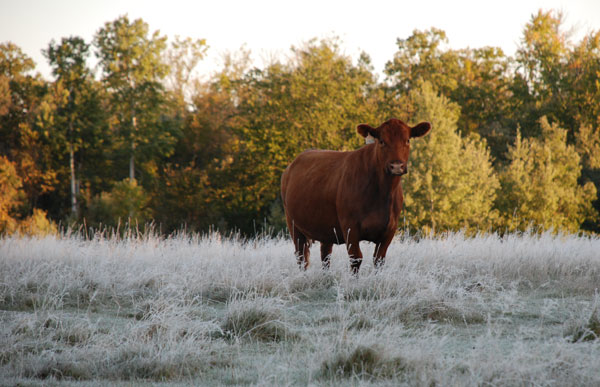Lice aren’t nice; protect your cowherd and your business
There are multiple options available to help prevent and combat lice.
September 8, 2016

Cooler weather brings with it a greater risk of lice, which are more prevalent in colder months. Left uncontrolled, lice can cause problems in your herd and may even impact your bottom line. In fact, the USDA estimates that livestock producers collectively lose $125 million per year to lice.1 Protecting your operation includes understanding the life cycle of lice, recognizing the potential damage and using effective methods of control.
Life cycle and types of lice
Louse life cycles are generally three to four weeks long and spent entirely on animals. This begins with female lice laying eggs (nits), which are glued to the host’s hair. Nymphs hatch from the eggs one to two weeks later and become fully developed adults in about two weeks. Adult females can lay approximately 30 to 40 eggs during their life. If not controlled, a single adult female in September can result in approximately 1 million lice by January.
Two types of lice live on cattle: sucking lice and biting lice. Sucking lice feed on the host’s blood and are most often found along the top line of an animal’s back, but also can spread to the poll and tail head. Biting lice, which ingest skin, hair and scabs, are more widespread on the body. One species of biting louse and four species of sucking lice infest cattle in the U.S.
Damage caused by lice
A single cow can harbor more than 1 million lice. Infestation can result in lameness, allergic responses, skin damage and more. If left uncontrolled, lice can cause anemia, lower milk production, decreased feed efficiency and reduced weight gain.2 Furthermore, lice can increase the animal’s susceptibility to diseases and mortality.3 Cattle infected with lice also tend to recover from diseases slower than healthy cattle.
Additional signs of louse infestation in cattle include restlessness, agitation and excessive rubbing or scratching, which can result in hair loss and raw spots.2 Open skin leaves cattle more inclined to illness, including various infections and anemia.
Excessive scratching not only harms the cattle, but can damage your property as well. Cattle with lice are inclined to scratch themselves by rubbing against edges of structures, which, due to their size, can damage sides of barns, fences, trees or any other property that could provide a scratching post.
Both groups are equally harmful to cattle, but fortunately, both respond to the same treatments.
Lice prevention and control
There are a variety of insecticides that can help you effectively control lice. Dusts, pour-ons and sprays provide easy-to-use and versatile treatment options.
Traditional treatments involve a two-step process: First, treatment to kill adults and nymphs on the animal, followed by a second treatment three weeks later to kill adult lice and nymphs that hatched from eggs after the first treatment.
A simpler, more efficient approach uses a product with an insect growth regulator (IGR), which kills adult lice, nymphs and eggs with a single application. Treated cattle should be re-examined about two weeks later, regardless of the treatment method used.
Action also must be taken to prevent re-infestation. Lice are spread primarily through animal to animal contact, including feeding, breeding or shipping. Due to this threat, facilities used by infested cattle should either be treated with insecticide or should remain empty for 10 days before being used by clean stock. Additionally, any new animals should be isolated from the resident herd and treated before they are added to the herd.
Keeping safety in mind
Finally, be sure to read the label and know what personal protection equipment is required for the products being used for lice control. Also, be sure that the employees applying these products are trained in the proper use of each product and the use of the appropriate equipment.
Lice infestations have the potential to be costly and frustrating. With proper planning and resources, producers can limit the destruction caused by lice this fall and winter.'
Doug Ross is senior technical services entomologist at Bayer Animal Health.
1 Campbell JB. (2006). Lice Control on Cattle. University of Nebraska-Lincoln Extension, Institute of Agriculture and Natural Resources website. Available at: http://ianrpubs.unl.edu/live/g1112/build/g1112.pdf. Accessed December 17, 2013.
2 Johnson G. (2010). Management of Lice on Livestock. Montana State University Extension. Available at: http://www.msuextension.org/flatheadres/documents/2010%2005%20May%20-%20Lice%20-%20MT201002AG.pdf. Accessed June 16, 2016.
3 Swiger, S.L. (2012) Managing External Parasites of Texas Cattle. AgriLife Extension. Available at: http://livestockvetento.tamu.edu/files/2010/10/Managing-External-Parasites-of-Texas-Cattle.pdf.
You might also like:
You May Also Like


.png?width=300&auto=webp&quality=80&disable=upscale)
